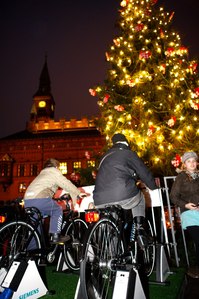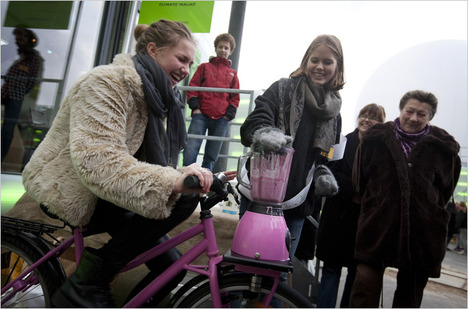(p. B1) Mr. McLinden is a member of a group of middle-aged emergency workers taking part in a trial to jump-start the use of unmanned aircraft by Europe’s emergency services. The goal is to give the region a head start over the United States and elsewhere in using drones to tackle real-world emergencies.
The “drone school” builds on Europe’s worldwide lead in giving public groups and companies relatively free rein to experiment with unmanned aircraft. If everything goes as planned, the project’s backers hope government agencies in Europe and farther afield can piggyback on the experiences, helping to transform drones from recreational toys to lifesaving tools.
“For us, this technology is a game-changer,” said Mr. McLinden, who traveled to Copenhagen (p. B4) for a three-day training course with two colleagues from the Mid and West Wales Fire and Rescue Service. They will start offering 24/7 drone support — allowing colleagues, for example, to monitor accidents from 300 feet above — across central Wales later this month.
“Drones aren’t going to replace what we do,” Mr. McLinden added. “But anything that we can do to give our crews an advantage, that’s great.”
. . .
In a somewhat stuffy classroom at a disused fire station in Copenhagen, Thomas Sylvest gave advice to Mr. McLinden and others from his two years of flying. As Denmark’s first, and so far only, emergency service drone pilot, Mr. Sylvest has responded to things as varied as missing person cases and fires, often receiving calls late at night.
Mr. Sylvest, a fast-talking 50-year-old, offered tips on how best to share videos streamed directly from drones to commanders on the ground. During a recent fire in downtown Copenhagen, Mr. Sylvest said, he was able to beam high-definition images from high above, allowing his bosses to judge if a building’s walls would collapse (they did not). And when the police called him out last year after a man was reported missing, he flew his drone along a stretch of train tracks to guide colleagues on where best to look. (The man was found.)
For the full story, see:
MARK SCOTT. “Emergency Workers Turn to Drones to Save Lives.” The New York Times (Mon., JUNE 20, 2016): B1 & B4.
(Note: ellipsis added.)
(Note: the online version of the commentary has the date JUNE 19, 2016, and has the title “Europe’s Emergency Workers Turn to Drones to Save Lives.”)




